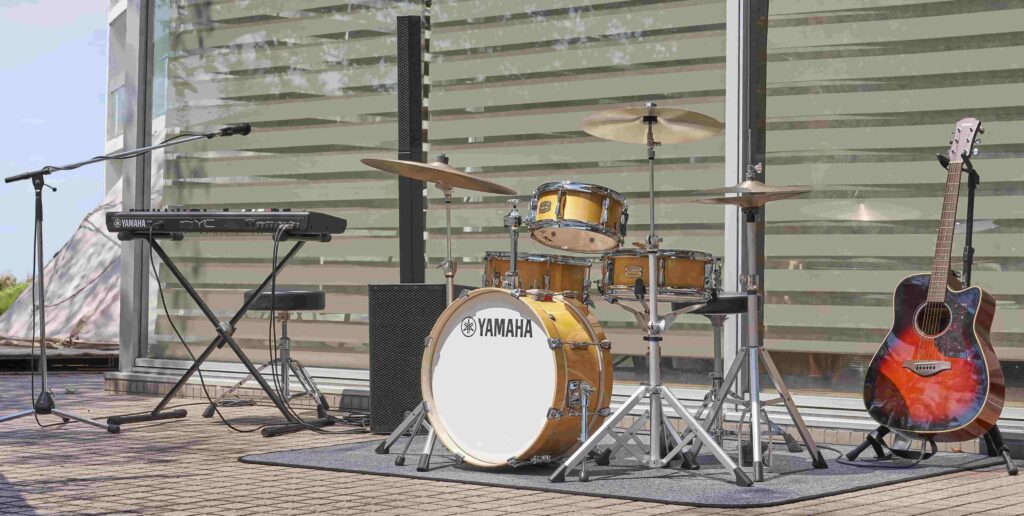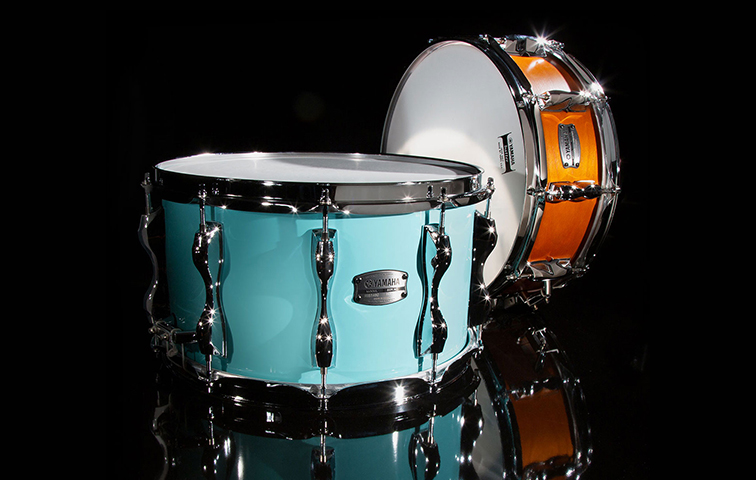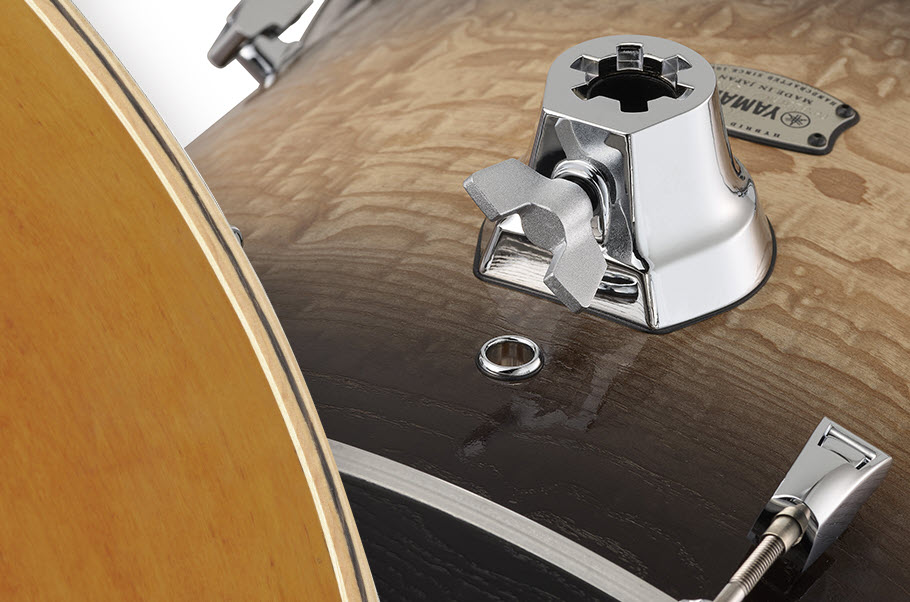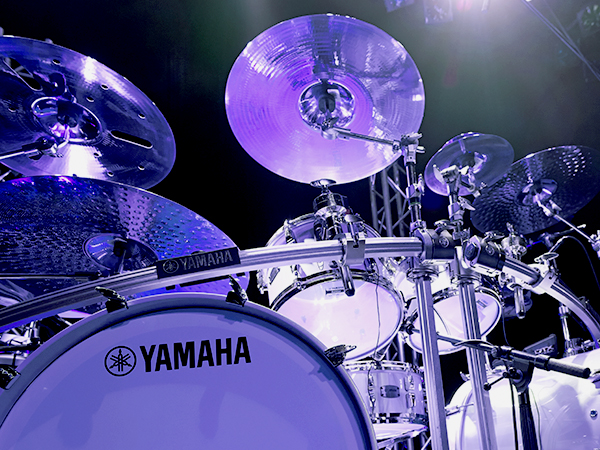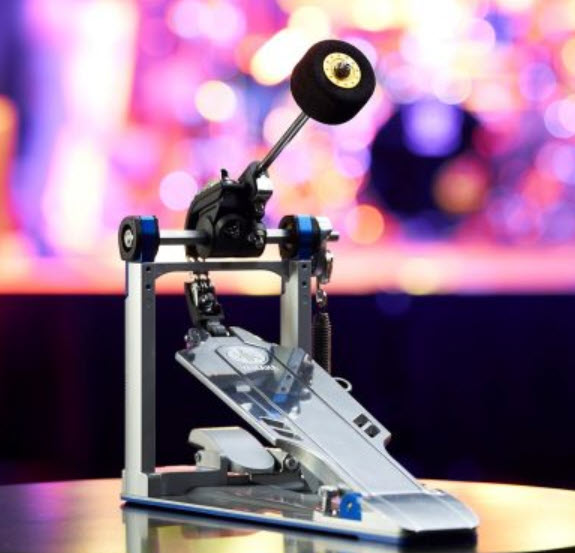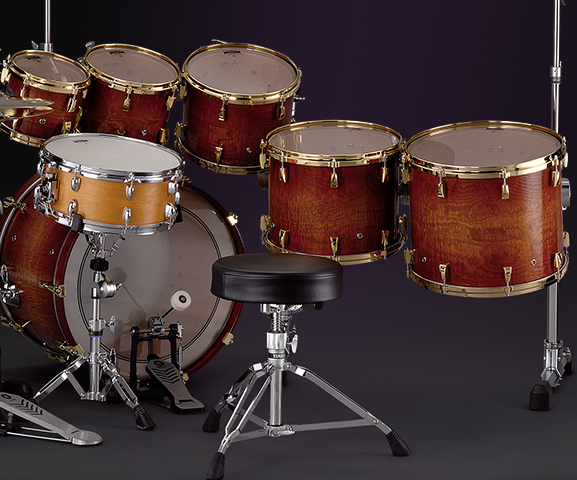The Life of a Drum Tech
Def Leppard’s drum tech on what the gig entails.
Behind every great drummer is a great drum tech. Simply put, a drum tech’s job is to set up and maintain drum kits. But there’s more to it than that. A tech’s real job is to anticipate an artist’s needs and mitigate any problems — preferably before they arise — that interfere with a musician’s ability to record a track or play a show.
In the case of a drum tech, this can be as simple as making sure there are enough sticks in the stick bag, taping a setlist down or tuning the drums, or as involved in designing and ordering new kits or dealing with vendors and suppliers around the world. But more than anything else, the biggest part of the job comes down to understanding the psychology of the player. A good tech will know what to say (or what not to say) before a performance to help their artist get into the zone. I’ve often said that the technical aspect of what I do (and it can get very technical) is only about 10% of the job and the rest is dealing with the people. No matter how difficult the gig, the former is far easier to learn than the latter.
WHAT IS THE DIFFERENCE BETWEEN A DRUM TECH AND A ROADIE?
Some people in my profession dislike the term “roadie,” but telling a random member of society that I am a “drum tech” will often garner the same reaction as showing a card trick to a dog. However, saying “roadie” will at least spark a small reaction of understanding. I do find that for a lot of us, “roadie” is used internally (among friends and industry folk) while “tech” is a term reserved for the public. In the past, you’d probably differentiate between the two by whether someone was skilled/knowledgeable or just a roadcase-pusher, but as the jobs have gotten more and more complicated (and the shows more expensive) you won’t really find anyone on tour who isn’t a part-time IT specialist. (I’m only kind of joking about that last bit.)
A TYPICAL DAY IN THE LIFE OF A DRUM TECH
A drum tech is the last in and first out at any show. By that I mean that out of 30 to 100 people on a decently sized tour, I am the last one to start my work and will typically be the first one finished. That may sound like an easy gig, but my workday is generally “only” about 14 hours long. I roll out of the tour bus at around 8:00 in the morning and wander my way into the venue to look for a restroom and find coffee and breakfast. The rest of the crew is already hard at work when I shuffle in, and have been for an hour or two.
At 10:00-ish I’ll get a radio call from the stage manager that our truck is ready to be unloaded. Our backline truck (“backline” is the generic term for band gear) also stores the monitor system, which takes up about half of the 53 feet of available space. Along with the other backline techs (the guitar techs, bass techs, etc.), we’ll round up a few local stagehands and get the gear up onto the stage. If we’re lucky, we’ll actually have room to set up but more often than not, the stage will still be covered in lighting truss and video panels. Oh well, back for more coffee. By noon we’ll have access to the stage and I’ll be able to start assembling the drum kit. In the case of Def Leppard, the drums travel already set up, bolted to a plate, and transported in a very large road case. Once the kit is lifted onto the drum riser I’ll patch in the computer racks and power things up. A quick tap check of the drum triggers will tell me if everything is working properly. If so, I can move on to general maintenance — things like changing heads as needed, wrapping drum sticks and making sure things didn’t loosen up on last night’s drive. If anything is broken, I’ll have about an hour to get it fixed.
At 2:30, the sound and backline crew will convene for a line check to make sure everything plays correctly and sounds good, both on stage and out front. I’ll go through and play each drum one at a time until I get the OK from the audio people to move on to the next one. I’ll then check the “playback” system, which in my case is a most definitely overly complicated computer system that plays a click track for the drummer and sync time code for the video department. (If you ever wonder how the video lines up so well with all of the music cues at a show, it’s because the drummer is listening to a click.)
Once the line check is done, I’ll finish cleaning things up (vacuuming the riser, perhaps polishing the cymbals) and wait for Rick Allen to stop by to either look things over or do a sound check. After that, I kill time (more coffee) until about an hour before the show. From then until the final encore, I’m in show mode. I’ll double-check my set lists and notes, as well as all of the hardware and electronics one more time, and then it’s off to the races once the intro song starts.
Since Rick plays a lot of electronics, I run the computers during the show and will handle patch changes as well as monitoring the triggers during each song and making adjustments on the fly. Because I also handle song intros and time code, I have to be as close to perfect as possible. There are few things that suck worse than having 20,000 people (as well as the five onstage) turn around and look at you because you messed up. As soon as the last song is done, I hop up on the riser to grab Rick’s in-ear monitors and tell him he played great (because 99.9% of the time he did).
Then, as the band walks down to the stage edge to take a bow, the chaos of loadout begins.
Actually, by the time the band leaves the stage, all of my gear, minus the kit, is already on its way to the truck. Because time is money and every minute I waste getting my stuff out of the way is one less minute the lighting crew gets to sleep (their day is a lot longer than my mere 14 hours), all our stuff is designed to move out in a hurry. On a normal run-of-the-mill gig, it only takes 30 minutes from the band saying goodnight to the backline/monitor truck rolling out of the dock. (Our best time was 16 minutes!)
Once the truck doors close, I am technically done for the day and will then turn my attention to finding a beverage and having a show post-mortem with the rest of the crew, talking about what worked, what didn’t, and what needs to be fixed or changed before the next show. Sometime between 1 and 2 in the morning, I’ll roll back into my bunk on the bus and fall asleep before waking up to do it all over again.
THE STEPS TO BECOMING A SUCCESSFUL DRUM TECH
If you want to become a drum tech, the best thing you can do is to be prepared for everything. By that, I mean be ready to for things to break and have a solution to fix them. If your drummer hits hard or has a lead foot, have a spare snare tuned up and ready to go, along with a backup kick drum pedal within arms reach. (Actually, even if they hit light, have those ready.) Study your player and their performances. I can often tell when there’s an issue with the hardware based on how Rick is playing. If something that is normally really busy is now super-simple, I’ll scan the kit to see if something is loose or broken. If I’m on my game, I’ll already be on the way up the riser with a replacement before Rick can turn around to get my attention.
Which brings me to suggestion #2: Always be paying attention. I’ve done entire tours where I haven’t seen a frame of the video content … and I’m sitting right in front of the video wall. I do gigs the same way I drive, constantly scanning back and forth (like checking my mirrors).
Last but not least: don’t get an ego about it: You’re there to help the artist create their art, not the other way around.
TIPS FOR THE DRUM TECH
1. Make sure the lugs are tight to the shells
If you can’t get a shell to tune no matter what you do, I’ll bet that the hardware is loose on the inside. The first thing I do with any new (to me) kit is to pull the shells apart and inspect the mounts because this can considerably cut down the amount of time you can spend chasing your tail when time really does matter. If you like a more “open” sound to a kick drum but still want to tighten things up a bit, cut a small 5- or 6-inch square of terrycloth or microfiber cloth and tape it to the center of the inside of the front head. This will slow the head down a bit and yield a lower/punchier tone. Oh, and tune for the mic/audience, not for how it sounds for you. An open/ring-y tone might be great when you’re right in front of the drum but might sound horrible out front and create real problems for the Front of House engineer. Remember, your FOH person is there to make you sound good, so don’t fight them when they tell you something isn’t working.
2. Bring some must-haves to every show
The must-haves for me are probably a little different than most as USB thumb drives aren’t a requirement for everyone, but here’s what every drum tech should bring to every show:
- Drum keys. Not one, lots of them. Have one in every pocket.
- A good multi tool. I use Gerber but a Leatherman will do just as well; having quick access to a pair of pliers and a knife is super important when you’re in a hurry.
- Gaffer’s tape. Get a roll or two of the good stuff: 2-inch black and 2-inch white. You can solve almost any issue (or at least get through a song) with this!
- Moongel damper pads. Some folks love them, some don’t. If you find them to be tone killers, cut them in half … or, and this is a total secret weapon, check out a Snareweight M80 drum damper. Instant killer snare and tom tones!
- A set of Allen keys (metric and standard). Nothing is worse than that one random piece coming loose on a kick drum pedal and realizing that no one has the proper tool to tighten it back up.
- A DrumDial™ drum tuner. I don’t use them much these days but if you’re in a loud environment, one of these can really save a lot of time in getting your drums close to being in tune.
Time to get ready for the next gig!










